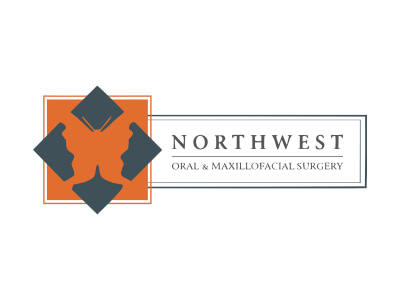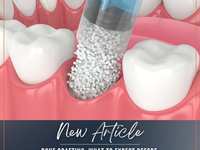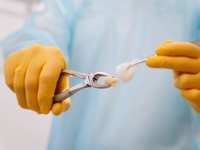- Categories :
- More
Understanding Broken Teeth: Causes, Symptoms, and Treatment Options

Maintaining healthy teeth is crucial for overall oral health, but sometimes teeth can become damaged or fractured due to various factors, ranging from painful traumatic events to subtle issues with no symptoms.
“A fractured or cracked tooth occurs due to age, tooth grinding, trauma, and other factors. You might not have any symptoms of a fractured tooth. Or you might notice pain, sensitivity, and swelling,” says the Cleveland Clinic.
The good news is that your dentist, or oral and maxillofacial surgeon depending on the damage, have options to treat a fracture, depending on the crack’s location and severity.
It is important, however, if you suspect you have a damaged or broken tooth, to seek help from a dental professional as soon as possible, as prompt treatment in some cases can even save a tooth.
Causes of Broken or Fractured Teeth
Teeth can become broken, cracked, or fractured due to several reasons.
“Teeth are remarkably strong and will last a lifetime if you take proper care of them. But even practicing impeccable oral hygiene and avoiding tooth decay and gum disease won't eliminate the possibility of chips, fractures, or breaks,” says Colgate.
Some of the leading causes of broken or fractured teeth include:
- Biting down on hard objects: Eating or chewing on hard substances like ice, popcorn kernels, or pens can lead to tooth fractures.
- Trauma or accidents: Physical injuries, falls, sports-related incidents, or any direct impact to the face or mouth area can cause tooth fractures.
- Tooth decay: Extensive tooth decay weakens the tooth structure, making it more prone to breakage.
- Dental work: Previous dental procedures like fillings or root canals can weaken the tooth structure and increase the risk of fractures.
- Teeth grinding (bruxism): Habitually grinding or clenching your teeth, often during sleep, can contribute to tooth fractures.
- Age-related factors: Teeth tend to become more brittle and prone to fractures as we age, with a higher risk after the age of 50.
Symptoms of Broken or Fractured Teeth
Recognizing the symptoms of a broken tooth is crucial for timely treatment.
“A fractured or broken tooth may or may not hurt, but even if it doesn't, you'll likely feel a change with your tongue, which has a sensitivity that gives things a "magnifying effect," making them feel larger than they are. This helps you notice any unwanted items in your food, like a fishbone, a piece of dirt, or a hair – and in this case, can help you identify dental issues,” says Colgate.
Common signs include:
- Erratic pain while chewing, especially when releasing biting pressure.
- Sensitivity to temperature extremes (hot or cold) that cause sudden pain.
- Spontaneous toothache without any apparent cause.
- Swelling or inflammation around the affected tooth.
- Change in tooth sensitivity or discomfort that comes and goes.
- Bleeding from the broken tooth in severe cases.
“A minor tooth fracture is less likely to cause pain, but a large tooth break will likely hurt. The tooth's nerve may be damaged or exposed to air or hot or cold foods or drinks. The pain may be constant or come and go. Many people feel pain when chewing because it puts more pressure on your tooth, which transfers to your nerves,” says Colgate.
Types of Tooth Fractures
Tooth fractures can vary in severity, and different types require different treatments.
Here are some common types of tooth fractures or cracks:
- Craze Lines: Superficial cracks that affect only the enamel, causing no pain or concern beyond appearance. These usually don't require treatment, but your dentist may polish your enamel to smooth out any rough spots.
- Chipped Tooth: Minor chips in a tooth can be common and do not always require treatments. Your dentist may polish and smooth out the chipped area or repair the area with filling material.
- Fractured Cusp: When a piece of the tooth's chewing surface breaks off, often around a filling. It rarely damages the pulp and can be repaired with a new filling or crown.
- Cracked Tooth: A crack extending from the chewing surface toward the tooth's root. Early diagnosis is crucial to save the tooth. Treatment may involve a root canal and crown to protect the crack from spreading.
- Split Tooth: A tooth that has split vertically into distinct segments. It often starts as a cracked tooth and requires extraction, although some portions may be saved with treatment by an oral surgeon or dentist.
- Serious Breaks: These breaks will expose your tooth’s nerve and likely will cause pain and bleeding. If your tooth is not extracted, then a root canal is needed to remove the exposed nerve, and a crown fitted in the damaged area.
- Vertical Root Fracture: Cracks that begin in the tooth's root and extend toward the chewing surface. Extraction is usually necessary, but surgery may be an option in some cases.
- Decay-Induced Break: Teeth can break, or even crumble, due to decay from the inside of the tooth. The tooth could be removed if the decay has spread down to the bone.
Treatment Options for Broken or Fractured Teeth
The appropriate treatment for a broken tooth depends on the type, location, and severity of the fracture.
“Sometimes your dental provider may recommend not repairing a broken tooth at all. This may occur when your fracture does not: affect your appearance, cause pain, or extend very deep or far, such as a hairline crack,” says the Cleveland Clinic.
Minor cracks or craze lines can be polished to smooth rough spots, while minor chips can be repaired with filling material or by smoothing and polishing the affected area.
For those cases where repair is needed, the following options may be used:
- Bonding: Components, such as plastic resin, are used to fill in the fracture.
- Cosmetic Contouring: Rough edge rounding and polishing smooths out the broken tooth.
- Crown: An artificial replacement that restores missing tooth structure by surrounding the remaining tooth structure or is placed on a dental implant. Can be made of metal, ceramic or polymer materials or a combination. Common application is a porcelain or ceramic cap fitted over the fractured tooth.
- Extraction: Complete removal of your tooth. Used when the root and nerves of your tooth show severe damage.
- Root canal: Removal of damaged pulp to prevent further tooth weakening. Used when the fracture extends into the pulp.
- Veneer: A thin covering of the facial surface of a tooth usually constructed of tooth-colored material used to restore discolored, damaged, misshapen, or misaligned teeth. Often used when you have a good amount of your natural tooth left.
How to Prevent a Broken or Fractured Tooth?
While it may not be possible to completely prevent tooth fracture – after all, accidents do happen -- there are preventive measures you can take to reduce the risk:
- Avoid chewing on hard objects like ice, pens, or popcorn kernels.
- Wear a mouthguard during sports activities to protect your teeth from trauma.
- Practice good oral hygiene to prevent tooth decay, which can weaken the tooth structure.
- If you grind your teeth, consider wearing a nightguard to protect them.
- Visit your dentist regularly for check-ups and address any dental issues promptly.
Understanding the causes, symptoms, and treatment options for broken teeth is essential for maintaining optimal oral health.
By taking preventive measures and seeking timely treatment, you can minimize the risk of tooth fractures and ensure the longevity of your teeth.
If you suspect a broken tooth or experience any concerning symptoms, Contact Northwest Oral and Maxillofacial Surgery today to speak with our oral surgeons who are specialists in the treatment of broken or fractured teeth.

















